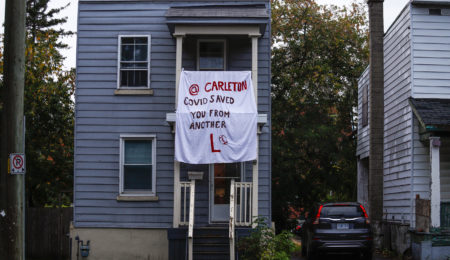How does sustainability look on Black Friday?
The day after American Thanksgiving, Black Friday, is famous for its discounts and deals. It attracts millions of shoppers to stores every year to take advantage of the deals that would not exist on a regular day. The name behind the day is almost as interesting as the day itself.
While there are various stories, the dominant tale is that the name ‘Black Friday’ originated from the chaos that ensued on the day of the annual Army-Navy football match in Philadelphia. On the Saturday of the match, tourists would flock to the city both to watch the game and shop. As a result, the police worked long hours to deal with crowd-related issues: accidents, traffic jams, shoplifting and more. Today, Black Friday is arguably one of the biggest shopping events of the year in the United States and this has influenced its neighbour– Canada.
In Canada, Black Friday was not always widely celebrated. However, due to Canada’a proximity to the United States, it eventually became a major marker for the start of the Canadian holiday shopping season. Today, the deals available on Black Friday and Cyber Monday drive millions of Canadians to the stores (online or in-person). However, both in Canada and the United States, Black Friday now shares the same date as an equally intriguing celebration — Buy Nothing Day.
Contrary to popular belief, Buy Nothing Day is not a new event either. The first Buy Nothing Day was organized in September 1992 by Canadian artist Ted Dave with the help and support of political magazine, Adbusters and its founder Kalle Lasn. The aim of Buy Nothing Day was (and still remains) to raise awareness about overconsumption.
While the event was initially on a separate day, it has since been moved to coincide with Black Friday, a day that is arguably one of the biggest shopping events of the year in North America. This juxtaposition of the biggest event celebrating consumption and the biggest event critiquing overconsumption is coming to the University of Ottawa on Nov. 29.
The Free Store, the U of O’s free ‘thrift store’ for staff, students and alumni of the U of O community, has been celebrating Buy Nothing Day for years. This year, the Free Store, the U of O’s answer to overconsumption culture, is holding its Buy Nothing Day event on Black Friday, Nov. 29. There is going to be a special opening of the store from 10 a.m. to 1 p.m. with unique donations just for the occasion. However, the Free Store is not the only organization engaged in sustainable consumption on Black Friday.
Around the U of O student community and the city of Ottawa, there are several traditions associated with Buy Nothing Day. While it is typical to donate, clean out your closet or participate in awareness campaigns, there are other methods to observe the day. People also attend upcycling workshops, sewing workshops and other activities that focus on repairing, reusing and repurposing existing items instead of buying new ones. Finally, another popular way of celebrating Buy Nothing Day is joining a Buy Nothing group.
Buy Nothing groups are Facebook-based groups open to anyone over the age of 18. These Buy Nothing groups are community-based gifting groups where people can give unwanted goods to people who want them. From earrings to fridges, nothing is off limits to give or receive in a Buy Nothing group. There are currently over 50 Buy Nothing groups in Ottawa including in U of O student communities: Lowertown, Centretown, Old Ottawa South and many other areas.
While all these alternatives are fun and unique ways to pass your Black Friday, it is also true that the Black Friday weekend (including Cyber Monday) provides people — students especially — the opportunity to buy necessary (and sometimes not necessary) goods at bargain prices. Stores like Best Buy, Walmart, and Home Depot have extraordinary deals for electronics sorely needed by students to get through the school year. Similarly, sales at stores like Knix allow people to get quality essentials at low prices.
Finally, Black Friday is a great opportunity to indulge in a guilty pleasure or get holiday shopping done with stores like Indigo, Frank and Oak, and Pandora having record sales. Overall, Black Friday allows people to buy quality gifts at bargain prices (something that students need badly).
Ultimately, the choice is up to individuals on how to celebrate Black Friday. Moreover, buying stuff on Black Friday is not mutually exclusive from being sustainable because Buy Nothing Day is not an ultimatum to give up on consumption. It is a warning to be conscious of individual consumption rates. Thus, moving towards sustainable consumption does not have to mean never buying new things, it just means thinking twice before checking out the same sweater in a third colour.






